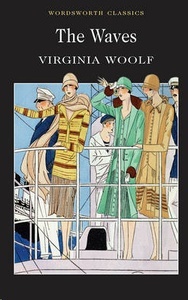The Waves

Editorial Wordsworth Classics
Colección Wordsworth Classics, Número 0
Fecha de edición noviembre 2020 · Edición nº 1
Idioma inglés
EAN 9781840224108
192 páginas
Libro
encuadernado en tapa blanda
Dimensiones 196 mm x 127 mm
Resumen del libro
This book comes with introduction and notes by Deborah Parsons, University of Birmingham. 'I am writing to a rhythm and not to a plot', Virginia Woolf stated of her eighth novel, "The Waves". Widely regarded as one of her greatest and most original works, it conveys the rhythms of life in synchrony with the cycle of nature and the passage of time. Six children - Bernard, Susan, Rhoda, Neville, Jinny and Louis - meet in a garden close to the sea, their voices sounding over the constant echo of the waves that roll back and forth from the shore. The subsequent continuity of these six main characters, as they develop from childhood to maturity and follow different passions and ambitions, is interspersed with interludes from the timeless and unifying chorus of nature.In pure stream-of-consciousness style, Woolf presents a cross-section of multiple yet parallel lives, each marked by the disintegrating force of a mutual tragedy. "The Waves" is her searching exploration of individual and collective identity, and the observations and emotions of life, from the simplicity and surging optimism of youth to the vacancy and despair of middle-age.
Biografía del autor
Hija del conocido hombre de letras Sir Leslie Stephen, Virginia Woolf nace en Londres el 25 de enero de 1882, y vive, desde su infancia, en un ambiente densamente literario. Al morir su padre, Virginia y su hermana Vanesa dejan el elegante barrio de Kensington y se trasladan al de Bloomsbury, más modesto y algo bohemio, que ha dado nombre al brillante grupo formado alrededor de las hermanas Stephen. En 1912 se casa con Leonard Woolf y juntos dirigen la Hogarth Press. El 28 de marzo de 1941, la genial novelista sucumbe a la grave dolencia mental que la aqueja desde muchos años atrás y se suicida ahogándose en el río Ouse. Además de Las olas (1931), Virginia Woolf fue autora de novelas tan importantes como El cuarto de Jacob (1922), La señora Dalloway (1925), Al faro (1927), Orlando (1928), Los años (1937) y Entre actos (1941).








